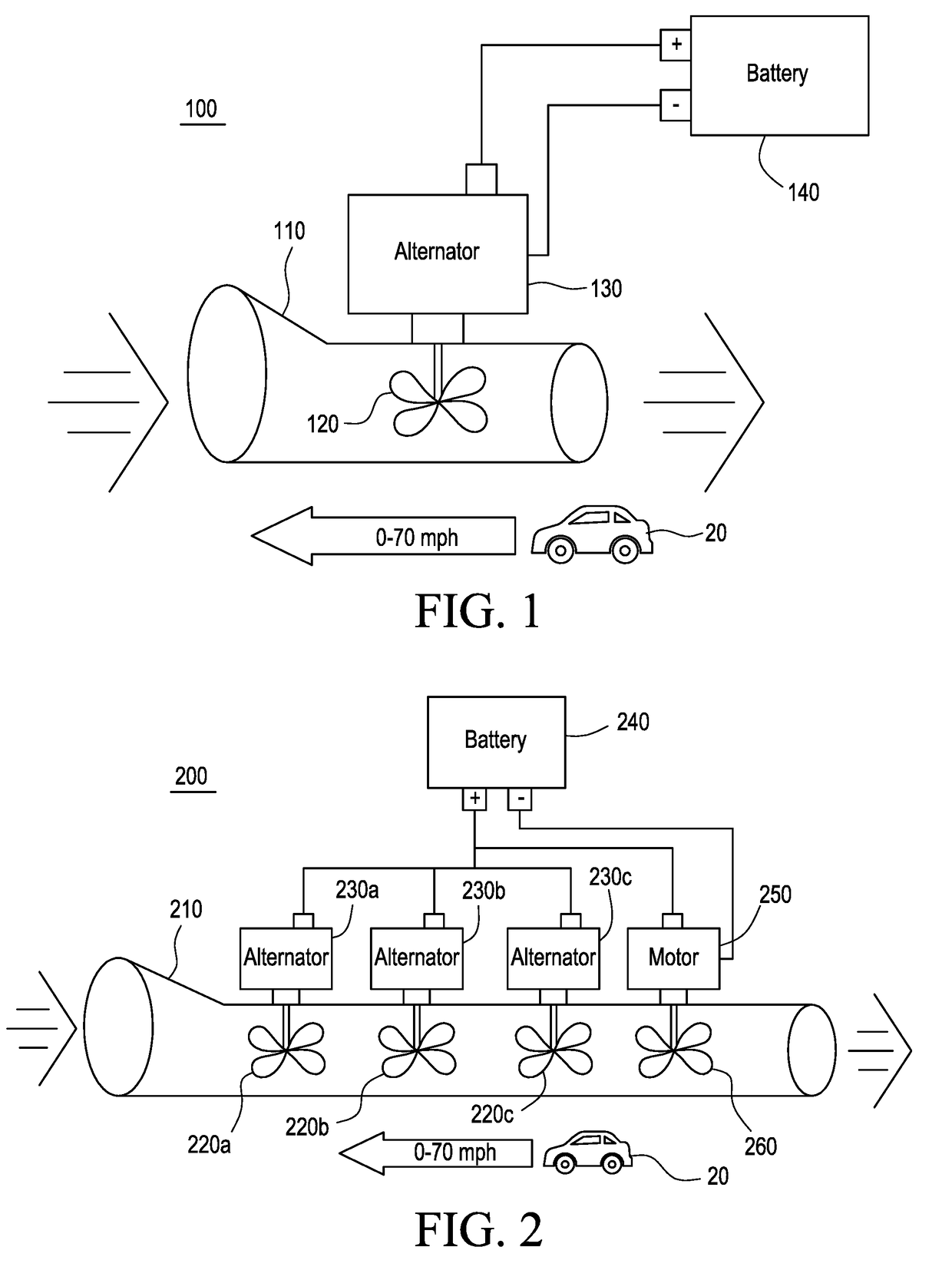Self Charger for Electric Vehicles
a self-charging and electric vehicle technology, applied in the direction of electric propulsion mounting, machines/engines, transportation and packaging, etc., can solve the problem of limited driving distance of electric vehicles, and achieve the effect of reducing carbon footprint, longer travel times, and reducing fossil fuel consumption
- Summary
- Abstract
- Description
- Claims
- Application Information
AI Technical Summary
Benefits of technology
Problems solved by technology
Method used
Image
Examples
Embodiment Construction
[0010]A semiconductor device according to the present invention will be described below in detail with reference to the accompanying drawings.
[0011]FIG. 1 illustrates a wind powered system 100 located inside a body of a car 20. Whether parked or in motion, the car 20 captures wind which passes through a wind tunnel 110. Inside the wind tunnel 110 is a rotary fan 120 that is connected to and feeds an alternator 130, which charges a battery 140 and powers an electrical system. The amount of power or electricity generated by the wind powered system 100 will be low and is not sufficient to power the car independently. However, in motor vehicles fueled by gasoline or diesel, this wind powered system can provide supplementary power for, among other things, lighting, audio system, and air conditioner of vehicles. This solution can ultimately decrease the overall battery depletion and reduce the amount of fuel consumed by the vehicles. FIG. 1 is the basic principle behind the consolidated d...
PUM
 Login to View More
Login to View More Abstract
Description
Claims
Application Information
 Login to View More
Login to View More - R&D
- Intellectual Property
- Life Sciences
- Materials
- Tech Scout
- Unparalleled Data Quality
- Higher Quality Content
- 60% Fewer Hallucinations
Browse by: Latest US Patents, China's latest patents, Technical Efficacy Thesaurus, Application Domain, Technology Topic, Popular Technical Reports.
© 2025 PatSnap. All rights reserved.Legal|Privacy policy|Modern Slavery Act Transparency Statement|Sitemap|About US| Contact US: help@patsnap.com



